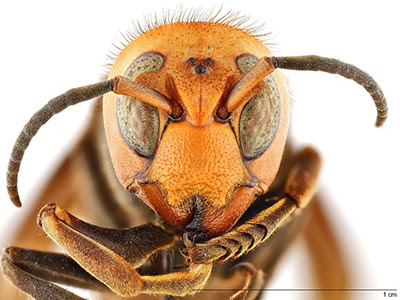
WASHINGTON – The Entomological Society of America (ESA) announced “northern giant hornet” as the common name for Vespa mandarinia (Asian giant hornet) in their list of “Common Names of Insects and Related Organisms” on July 25. The U.S. Department of Agriculture’s Animal and Plant Health Inspection Service (APHIS) supports ESA’s plans to adopt this new common name, as well as new common names for two additional hornet species.

V. mandarinia is the world’s largest hornet. It is native to tropical, subtropical, and temperate mountainous regions in Asia. This invasive pest was first reported in the Vancouver Island area of Canada in August 2019 and has since been detected in the far northwest corner of Washington State. V. mandarinia preys on many types of insects, including honey bees. They also consume carbohydrates such as sap and ripe fruit.
In conjunction with “northern giant hornet,” ESA has adopted “southern giant hornet” as the common name for Vespa soror and “yellow-legged hornet” for Vespa velutina. Neither of these hornets are currently found in the United States. V. soror is a closely related—and similarly large—species to V. mandarinia, and the descriptors “northern” and “southern” refer to the species’ native geographic ranges in Asia.
APHIS will follow the scientific community’s lead in adopting the new common names. In future communications—including its research journals, ID Tools, USDA blog, website, and social media—APHIS will adopt “northern giant hornet” in reference to V. mandarinia, “southern giant hornet” for V. soror, and “yellow-legged hornet” for V. velutina.
To learn more about the northern giant hornet, click here.
To learn more about ESA, click here.
To learn more about USDA, click here.
To learn more about APHIS, click here.







